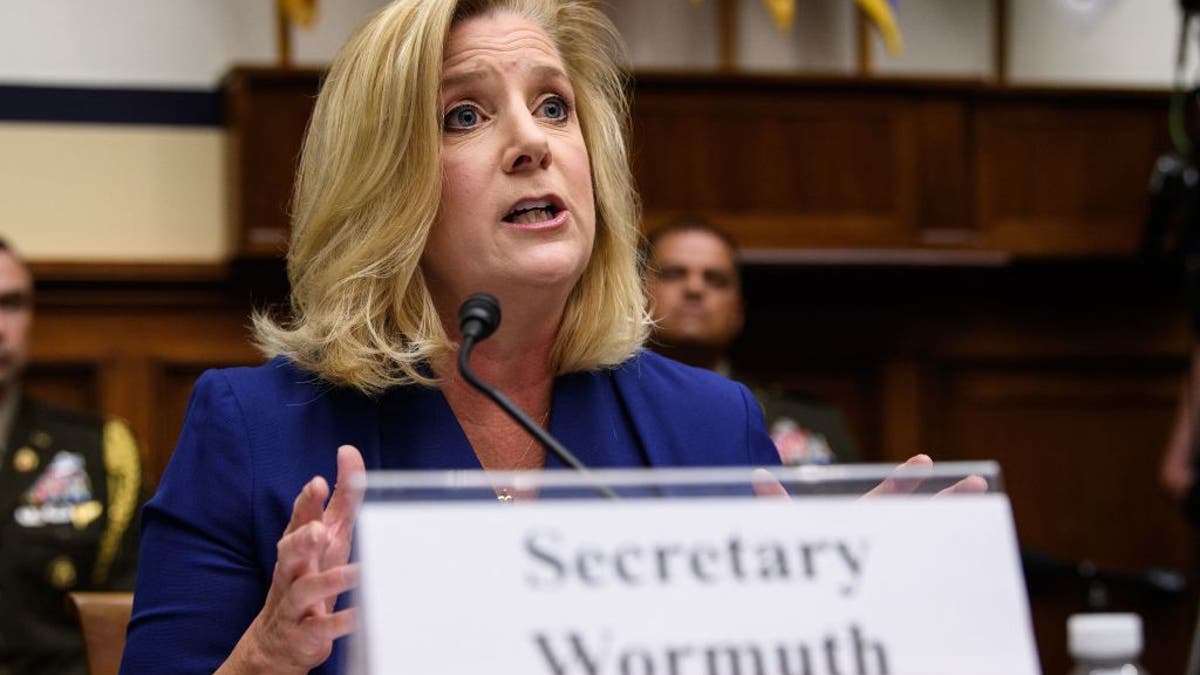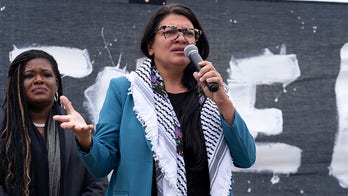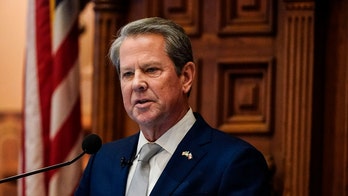Gutfeld: Arnold Schwarzenegger is our favorite climate warrior
Greg Gutfeld points out the 'hypocrisy' of climate change activists flying private jets while pushing to lower emissions.
The U.S. Army unveiled a plan this week to tackle issues surrounding climate change, including the establishment of an electric vehicle fleet, as well as the reduction of the branch's greenhouse gas emissions.
The plan, outlined by the Army in a document titled "Climate Strategy," calls for the service to cut its emissions by 50% by 2030 from 2005 levels and reach net-zero emissions by 2050.

Integrated Visual Augmentation System (IVAS), soldier-worn combat goggles (Army)
The strategy aims to establish an "all-electric light-duty non-tactical vehicle fleet by 2027" and an "all-electric non-tactical vehicle fleet by 2035."
"There are 950 renewable energy projects supplying 480 megawatts of power to the Army today … scoped and planned through 2024," the Army strategy stated. "The Army will continue these and other efforts under the Army Installation Energy and Water Strategic Plan to maximize resilience, efficiency and affordability on every installation."

U.S. Secretary of the Army Christine Wormuth speaks on Capitol Hill in Washington, D.C., June 29, 2021. (Nicholas Kamm/AFP via Getty Images)
"Climate change threatens America’s security and is altering the geostrategic landscape as we know it," Army Secretary Christine Wormuth said in a message included in the strategy. "For today’s soldiers operating in extreme temperature environments, fighting wildfires and supporting hurricane recovery, climate change isn’t a distant future, it is a reality."
Insisting that the "time to address climate change is now," Wormuth said the Army will "lead by example" as it works to address the effects from climate change that have "taken a toll on supply chains, damaged our infrastructure and increased risks to Army soldiers and families due to natural disasters and extreme weather."

U.S. Army Sgt. 1st Class Chez Carter, assigned to Alpha Company, 2nd Battalion, 5th Cavalry Regiment, 1st Armored Brigade Combat Team, 1st Cavalry Division ground guides a M2A3 Bradley Fighting Vehicle during a Table XII Live Fire Exercise, Novo Selo. (U.S. Army)
"The Army must adapt across our entire enterprise and purposefully pursue greenhouse gas mitigation strategies to reduce climate risks," Wormuth added. "If we do not take action now, across our installations, acquisition and logistics and training, our options to mitigate these risks will become more constrained with each passing year."
CLICK HERE TO GET THE FOX NEWS APP
The strategy follows orders from President Biden calling on agencies to better adapt to climate change.






